July 2019
Horace Bristol (American, 1908-1997)
PBY Blister Gunner, Rescue at Rabaul, 1944
1944
Gelatin silver print
On the fly
This is a stunning picture taken of a brave, courageous, and beautiful man. It is also quite an erotic photograph of a naked man. Can a picture of this man be both heroic and erotic? Of course it can.
A comment on the article “The naked gunner, Rescue at Rabaul, 1944,” on the Rare Historical Photos website November 12, 2021 [Online] Cited 23/03/2022 from which the quote below is taken observes:
“There’s nothing inherently erotic about simple nudity, as any naturist can tell you. If people refrained from sexualizing images of clothes-free living / working / recreating, then perhaps we could have more of it, with the benefit of improving both physical and mental health.”
The comment is prudish to say the least. Modern French conceptions of eroticism state that it is an act of transgression that affirms our humanity, a transgression of the taboo, in this case the desire of pleasurable looking (scopophilia). The French philosopher Georges Bataille argues that eroticism performs a function of dissolving boundaries between human subjectivity and humanity, a transgression that dissolves the rational world… for Bataille, as well as many French theorists, “Eroticism, unlike simple sexual activity, is a psychological quest… eroticism is assenting to life even in death”. (George Bataille, Eroticism, Penguin 2001, p. 11.)
Even in the face of death (the man’s heroic actions in rescuing the downed pilot, and the death freeze, the memento mori, of the photograph) we, the observer, can affirm his life through eroticism, this forbidden impulse. As Christopher Lasch comments,
“Twentieth-century peoples have erected so many psychological barriers against strong emotion, and have invested those defenses with so much energy derived from forbidden impulse, that they can no longer remember what it feels like to be inundated with desire. They tend, rather, to be consumed with rage, which derives from defenses against desire and gives rise in turn to new defenses against rage itself. Outwardly bland, submissive, and sociable, they seethe with an inner anger for which a dense, overpopulated, bureaucratic society can devise few outlets.”1
While we acknowledge the strength and commitment of this brave young man and admire his “majestic nakedness” … on another level, we can invest in those oft denied strong emotions of pleasure and desire. Pleasure in looking at his body and desire for his youth and masculinity which overturns the forbidden impulse and transgresses the supposed taboo that a hero cannot be desired. Brave, heroic, human and downright hot, hot, hot!
Dr Marcus Bunyan
PS. Please note the chart ‘This is the enemy’ by the mans buttocks, so that he can keep an eye out for Japanese ships while patrolling. His position in the aircraft is noted in the close up photograph below.
1/ Lasch, Christopher. The Culture of Narcissism. New York: W.W. Norton and Company, 1978, p. 11.
Please click on the photographs for a larger version of the image.
This young crewman of a US Navy “Dumbo” PBY rescue mission has just jumped into the water of Rabaul Harbor to rescue a badly burned Marine pilot who was shot down while bombing the Japanese-held fortress of Rabaul. Since Japanese coastal defense guns were firing at the plane while it was in the water during take-off, this brave young man, after rescuing the pilot, manned his position as machine gunner without taking time to put on his clothes. A hero photographed right after he’d completed his heroic act. Naked.
Photo taken by Horace Bristol (1908-1997). In 1941, Bristol was recruited to the U.S. Naval Aviation Photographic Unit, as one of six photographers under the command of Captain Edward J. Steichen, documenting World War II in places such as South Africa, and Japan. He ended up being on the plane the gunner was serving on, which was used to rescue people from Rabaul Bay (New Britain Island, Papua New Guinea), when this occurred. In an article from a December 2002 issue of B&W magazine he remembers:
“… we got a call to pick up an airman who was down in the Bay. The Japanese were shooting at him from the island, and when they saw us they started shooting at us. The man who was shot down was temporarily blinded, so one of our crew stripped off his clothes and jumped in to bring him aboard. He couldn’t have swum very well wearing his boots and clothes. As soon as we could, we took off. We weren’t waiting around for anybody to put on formal clothes. We were being shot at and wanted to get the hell out of there. The naked man got back into his position at his gun in the blister of the plane.”
Anonymous. “The naked gunner, Rescue at Rabaul, 1944,” on the Rare Historical Photos website Nd [Online] Cited 02/07/2019
“To understand the current mainstream eroticising of the male body as a purely homoerotic gesture, though, is to misrecognise the nature of the desire which flows between the media and its audience. The desire courted by men’s magazines, whether they are pitched at a nominally hetero or homosexual market, is the desire to consume. For consumer’s it’s a seduction which is increasingly mediated by the consumption of images. What is presaged by the new sexualising of men is not merely the extension and refinement of an existing market, but a new order of commodification. Originally carriers of the commodity virus, images have become desirable in themselves. Or to put it another way, our desires are increasingly modelled on the logic of images.”
Lumby, Catharine. “Nothing Personal: Sex, Gender and Identity in The Media Age,” in Matthews, Jill (ed.,). Sex in Public: Australian Sexual Cultures. St. Leonards: Allen and Unwin, 1997, p. 9.
“The second school of thought is characterized by newer approaches, which forcibly challenge these essentialist notions of sexuality. This second school of thought includes neo-psychoanalytic approaches which see sexuality and sexual desire as constituted in language (the work of Freud reinterpreted via Jacques Lacan; a position that has been taken up by feminists such as Juliet Mitchell). It also includes discursive or poststructuralist approaches which take as a starting point the work of Michel Foucault who argues that sexuality is an historical apparatus and sex is a complex idea that was formed with the deployment of sexuality.
What links this second group of theorists is the recognition of social and historical sources of sexual definitions and a belief that bodies are only unified through ideological constructs such as sex and sexuality. That is; sex and sexuality are, and have been, shaped and determined by a multiplicity of forces (such as race, class and religion) and have undergone complex historical transformations. We therefore give the notions of sex, gender and sexuality different meanings at different times and for different people. These notions combine to create understandings of ‘sexualized bodies’ which are subsequently expressed and reinforced through a variety of mechanisms; for example through marriage laws, the regulations of deviance, the judiciary, the police, as well as, more generally, the education system, and the welfare system (Weeks, 1989, p. 9). This view of sexuality as ‘constructed’ is in agreement with the view of sex as ‘given’ on the basis that sex and sexuality define us socially and morally. However, this second view suggests that sexuality could be a potentiality for choice, change and diversity, but instead we see it as destiny – and depending on whether you are male, female, homosexual, heterosexual, young, old, black or white, for example, your destiny is set in certain ways.”
Stephen, Kylie. “Sexualized Bodies,” in Evans, M. and Lee, E. (eds.,). Real Bodies. Palgrave, London, 2002, p. 30 [Online] Cited 05/07/2019
Eroticism
Eroticism (from the Greek ἔρως, eros – “desire”) is a quality that causes sexual feelings, as well as a philosophical contemplation concerning the aesthetics of sexual desire, sensuality, and romantic love. That quality may be found in any form of artwork, including painting, sculpture, photography, drama, film, music, or literature. It may also be found in advertising. The term may also refer to a state of sexual arousal or anticipation of such – an insistent sexual impulse, desire, or pattern of thoughts.
As French novelist Honoré de Balzac stated, eroticism is dependent not just upon an individual’s sexual morality, but also the culture and time in which an individual resides. …
French philosophy
Modern French conceptions of eroticism can be traced to Age of Enlightenment, when “in the eighteenth century, dictionaries defined the erotic as that which concerned love… eroticism was the intrusion into the public sphere of something that was at base private”. This theme of intrusion or transgression was taken up in the twentieth century by the French philosopher Georges Bataille, who argued that eroticism performs a function of dissolving boundaries between human subjectivity and humanity, a transgression that dissolves the rational world but is always temporary, as well as that, “Desire in eroticism is the desire that triumphs over the taboo. It presupposes man in conflict with himself”. For Bataille, as well as many French theorists, “Eroticism, unlike simple sexual activity, is a psychological quest… eroticism is assenting to life even in death”. (George Bataille, Eroticism, Penguin 2001, p. 11.)
Non-heterosexual
Queer theory and LGBT studies consider the concept from a non-heterosexual perspective, viewing psychoanalytical and modernist views of eroticism as both archaic and heterosexist, written primarily by and for a “handful of elite, heterosexual, bourgeois men” who “mistook their own repressed sexual proclivities” as the norm.
Theorists like Eve Kosofsky Sedgwick, Gayle S. Rubinand Marilyn Frye all write extensively about eroticism from a heterosexual, lesbian and separatist point of view, respectively, seeing eroticism as both a political force and cultural critique for marginalised groups, or as Mario Vargas Llosa summarised: “Eroticism has its own moral justification because it says that pleasure is enough for me; it is a statement of the individual’s sovereignty”. (Mangan, J. A. “Men, Masculinity, and Sexuality: Some Recent Literature,” in Journal of the History of Sexuality 3:2, 1992, pp. 303-313.)
Text from the Wikipedia website
Horace Bristol (American, 1908-1997)
PBY Blister Gunner, Rescue at Rabaul, 1944 (detail)
1944
Gelatin silver print
Battleships
Nagato
?
Fuso
Horace Bristol
Horace Bristol (November 16, 1908 – August 4, 1997) was a twentieth-century American photographer, best known for his work in Life. His photos appeared in Time, Fortune, Sunset, and National Geographic magazines.
Early life
Bristol was born and raised in Whittier, California, he was the son of Edith Bristol, women’s editor at the San Francisco Call. Bristol attended the Art Center of Los Angeles, originally majoring in architecture. In 1933, he moved to San Francisco to work in commercial photography, and met Ansel Adams, who lived near his studio. Through his friendship with Adams, he met Edward Weston, Imogen Cunningham, and other artists. He was copy reader at night for the Los Angeles Times after graduating from Belmont High School.
Photography career
In 1936, Bristol became a part of Life‘s founding photographers, and in 1938, began to document migrant farmers in California’s central valley with John Steinbeck, recording the Great Depression, photographs that would later be called the Grapes of Wrath collection.
In 1941, Bristol was recruited to the U.S. Naval Aviation Photographic Unit, as one of six photographers under the command of Captain Edward J. Steichen, documenting World War II in places such as South Africa, and Japan. Bristol helped to document the invasions of North Africa, Iwo Jima, and Okinawa.
Later life
Following his documentation of World War II, Bristol settled in Tokyo, Japan, selling his photographs to magazines in Europe and the United States, and becoming the Asian correspondent to Fortune. He published several books, and established the East-West Photo Agency.
Following the death of his wife in 1956, Bristol burned all his negatives, packed his photographs into storage, and retired from photography. He went on to remarry, and have two children. He returned to the United States, and after 30 years, recovered the photographs from storage, to share with his family. Subsequently he approached his alma mater, Art Center College of Design, where the World War II and migrant worker photographs became the subject of a 1989 solo exhibition. The migrant worker photos would go on to be part of the J. Paul Getty Museum’s Grapes of Wrath series.
Text from the Wikipedia website
Silhouette recognition chart of Japanese surface vessels of World War 2 September 1944
Great Planes – Catalina Pby
A great documentary about this plane.
U.S. Navy
A U.S. Navy Consolidated PBY-5A Catalina patrol bomber in flight, 1942-43
c. 1942
U.S. National Archives 80-G-K-14896
This plane carries radar antennas under its wing
U.S. Navy
A U.S. Navy Consolidated PBY-5A Catalina patrol bomber in flight, 1942-43 (detail)
c. 1942
U.S. National Archives 80-G-K-14896
Consolidated PBY Catalina
Around 3,300 aircraft were built, and these operated in nearly all operational theatres of World War II. The Catalina served with distinction and played a prominent and invaluable role against the Japanese. This was especially true during the first year of the war in the Pacific, because the PBY and the Boeing B-17 Flying Fortress were the only American aircraft with the range to be effective in the Pacific.
First flight: 28 March 1935
Introduction: October 1936, United States Navy
Retired: January 1957 (United States Navy Reserve)
1979 (Brazilian Air Force)
Primary users: United States Navy
United States Army Air Forces
Royal Air Force
Royal Canadian Air Force
Produced: 1936-1945
Number built: 3,305 (2,661 U.S.-built, 620 Canadian-built, 24 Soviet-built
General characteristics
Crew: 10 – pilot, co-pilot, bow turret gunner, flight engineer, radio operator, navigator, radar operator, two waist gunners, ventral gunner
Length: 63 ft 10 7/16 in (19.46 m)
Wingspan: 104 ft 0 in (31.70 m)
Height: 21 ft 1 in (6.15 m)
Wing area: 1,400 ft² (130 m²)
Empty weight: 20,910 lb (9,485 kg)
Max. takeoff weight: 35,420 lb (16,066 kg)
Zero-lift drag coefficient: 0.0309
Drag area: 43.26 ft² (4.02 m²)
Aspect ratio: 7.73
Powerplant: 2 × Pratt & Whitney R-1830-92 Twin Wasp radial engines, 1,200 hp (895 kW) each
Performance
Maximum speed: 196 mph (314 km/h)
Cruise speed: 125 mph (201 km/h)
Range: 2,520 mi (4,030 km)
Service ceiling: 15,800 ft (4,815 m)
Rate of climb: 1,000 ft/min (5.1 m/s)
Wing loading: 25.3 lb/ft² (123.6 kg/m²)
Power/mass: 0.067 hp/lb (0.111 kW/kg)
Lift-to-drag ratio: 11.9
Armament
3x .30 cal (7.62 mm) machine guns (two in nose turret, one in ventral hatch at tail)
2x .50 cal (12.7 mm) machine guns (one in each waist blister)
4,000 lb (1,814 kg) of bombs or depth charges; torpedo racks were also available
October 1941 – January 1945
Hydraulically actuated, retractable tricycle landing gear, with main gear design based on one from the 1920s designed by Leroy Grumman, for amphibious operation. Introduced tail gun position, replaced bow single gun position with bow “eyeball” turret equipped with twin .30 machine guns (some later units), improved armour, self-sealing fuel tanks.
Search and rescue
Catalinas were employed by every branch of the U.S. military as rescue aircraft. A PBY piloted by LCDR Adrian Marks (USN) rescued 56 sailors in high seas from the heavy cruiser Indianapolis after the ship was sunk during World War II. When there was no more room inside, the crew tied sailors to the wings. The aircraft could not fly in this state; instead it acted as a lifeboat, protecting the sailors from exposure and the risk of shark attack, until rescue ships arrived. Catalinas continued to function in the search-and-rescue role for decades after the end of the war.
Text from the Wikipedia website
Howard R. Hollem (American, d. 1949) for the United States Office of War Information
Jesse Rhodes Waller, a World War II Aviation Ordnanceman stationed at the Naval Air Station in Corpus Christi, Texas, installing a M1919 Browning machine gun in a United States Navy PBY plane
August 1942
Kodachrome film
United States Library of Congress Prints and Photographs division digital ID fsac.1a34894
The image is in the public domain
It’s an intricate operation – installing a 30-calibre machine gun in a Navy PBY plane, but not too tricky for Jesse Rhodes Waller, Corpus Christi, Texas. He’s a Georgia man who’s been in the Navy 5-1/2 years. At the Naval Air Base he sees that the flying ships are kept in tip-top shape. Waller is an aviation ordnance mate (AOM)
Howard R. Hollem was a photographer with the US Farm Security Administration and the US Office of War Information during the 1930s and 1940s.
Jesse Rhodes Waller was enlisted in the US Navy 13 Oct 1936 in Macon, Georgia. He served aboard USS Tarbell (DD-142) and USS Curtiss (AV-4).
Howard R. Hollem (American, d. 1949) for the United States Office of War Information
Jesse Rhodes Waller, a World War II Aviation Ordnanceman stationed at the Naval Air Station in Corpus Christi, Texas, installing a M1919 Browning machine gun in a United States Navy PBY plane (detail)
August 1942
Kodachrome film
United States Library of Congress Prints and Photographs division digital ID fsac.1a34894
The image is in the public domain
Howard R. Hollem (American, d. 1949) for the United States Office of War Information
US Navy ordnanceman Jesse Rhodes Waller posing with a M1919 Browning machine gun in a PBY Catalina aircraft, Naval Air Station, Corpus Christi, Texas, United States
August 1942
Kodachrome film
United States Library of Congress Prints and Photographs division
The image is in the public domain





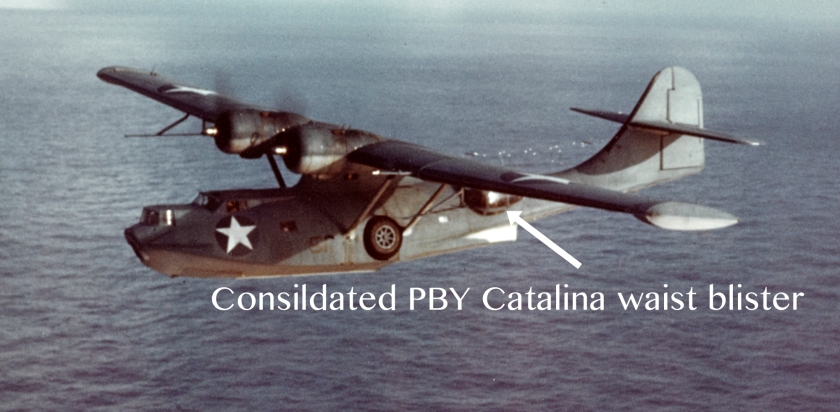
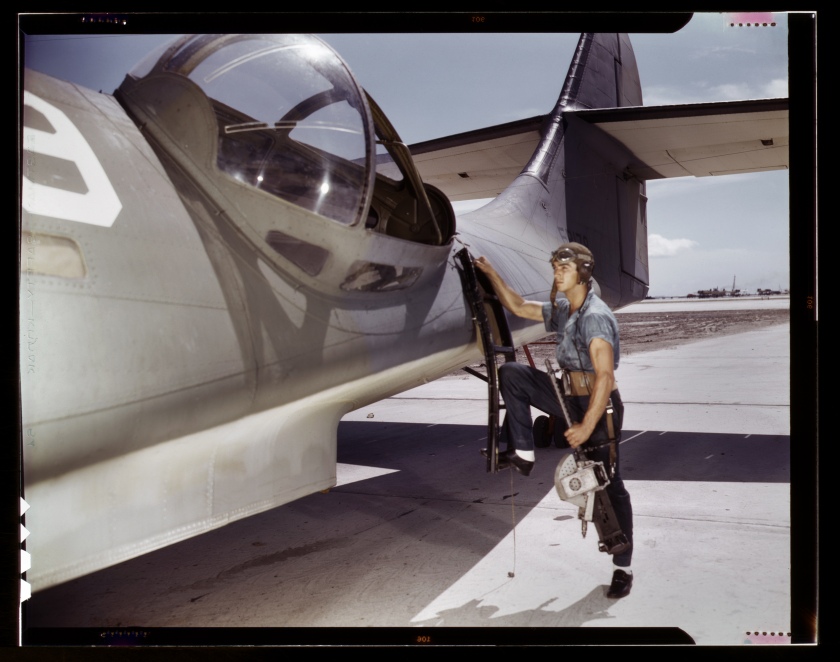


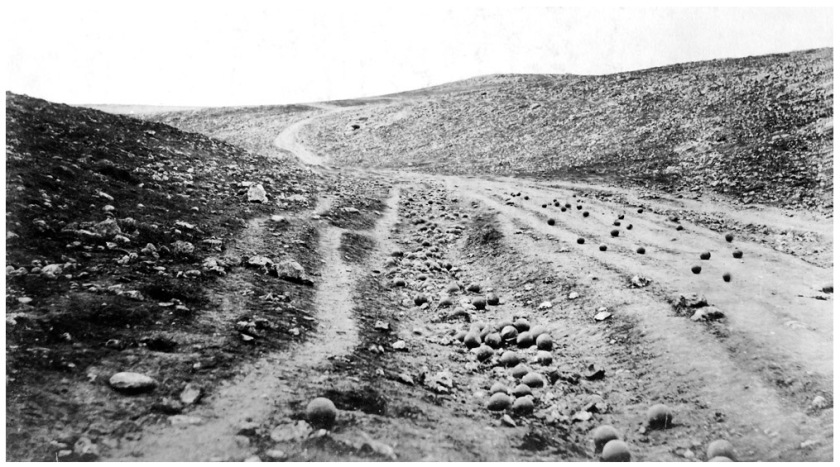
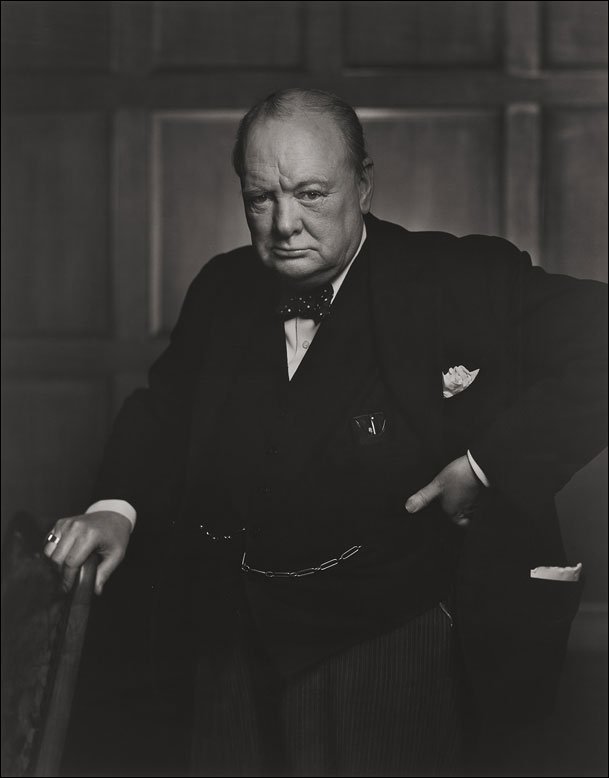
![Roger Fenton (English, 1819-1869) 'The artist's van [Marcus Sparling, full-length portrait, seated on Roger Fenton's photographic van]' 1855 Roger Fenton (English, 1819-1869) 'The artist's van [Marcus Sparling, full-length portrait, seated on Roger Fenton's photographic van]' 1855](https://artblart.com/wp-content/uploads/2012/12/roger_fentons_waggon2.jpg?w=840&h=884)
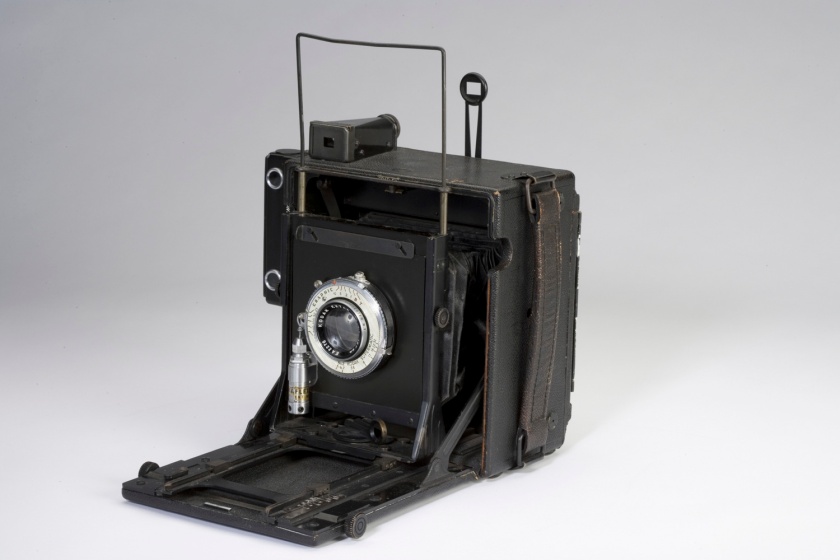
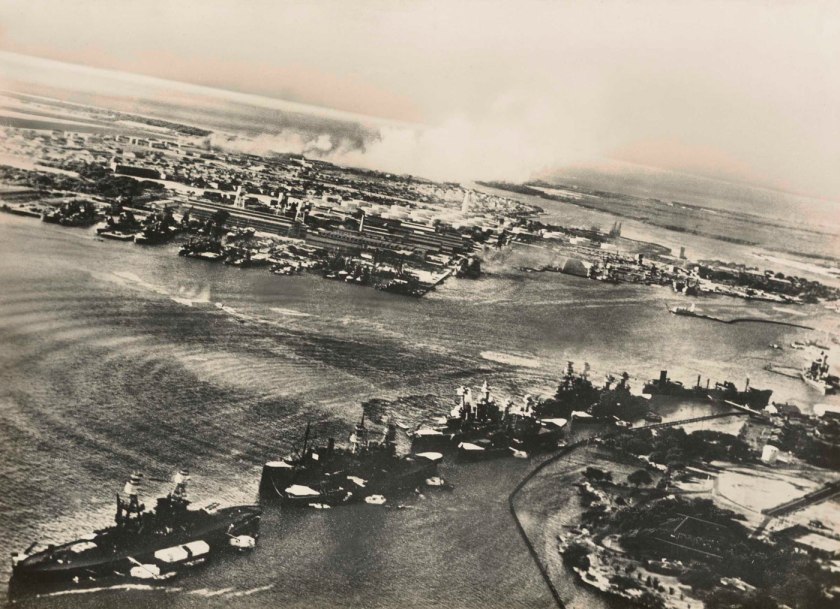
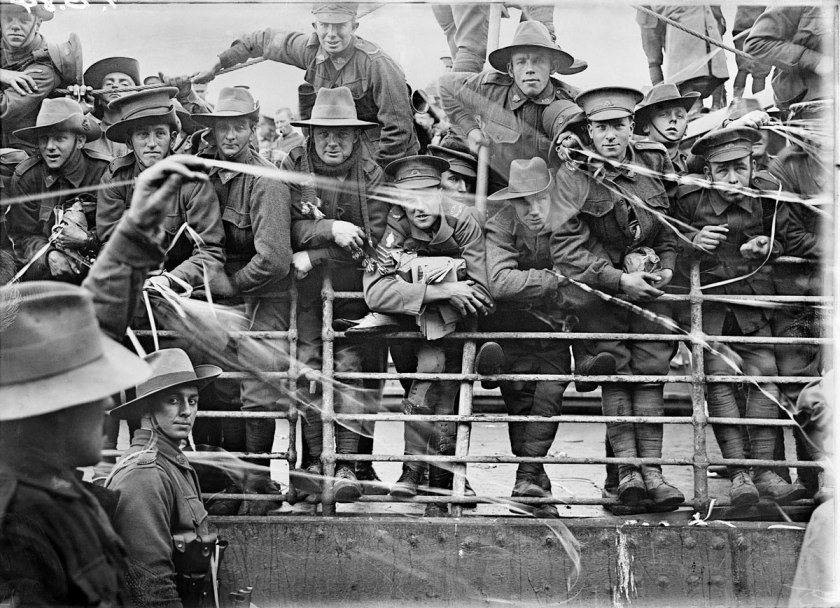

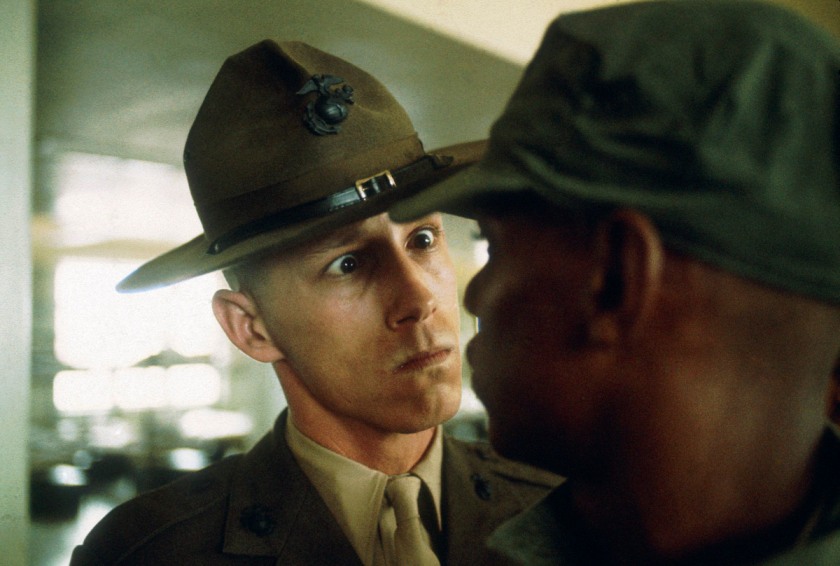
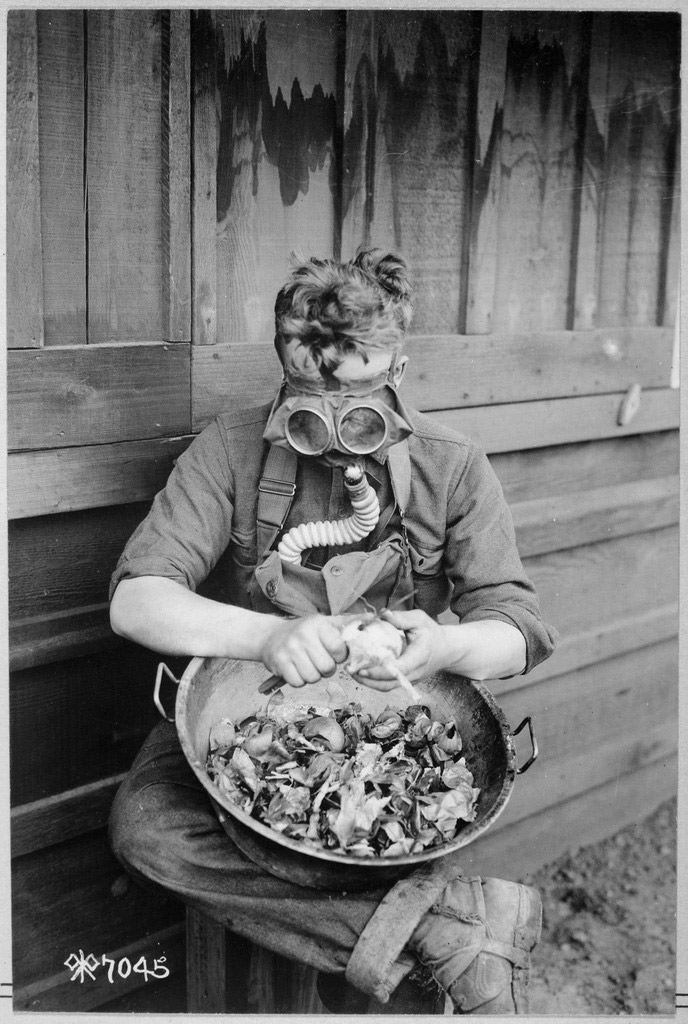

![T.E. Lawrence. 'Untitled [A Tulip bomb explodes on the railway Hejaz Railway, near Deraa, Hejaz, Ottoman Empire]' 1918 T.E. Lawrence. 'Untitled [A Tulip bomb explodes on the railway Hejaz Railway, near Deraa, Hejaz, Ottoman Empire]' 1918](https://artblart.com/wp-content/uploads/2012/11/telawrence.jpg?w=840)
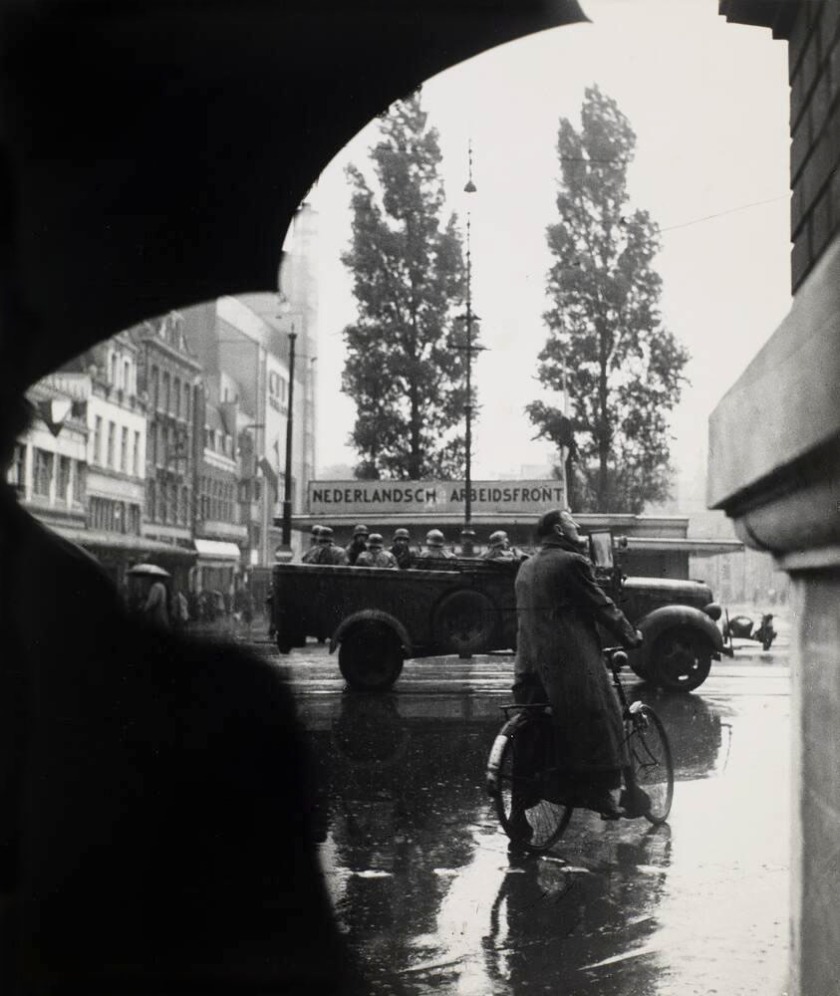
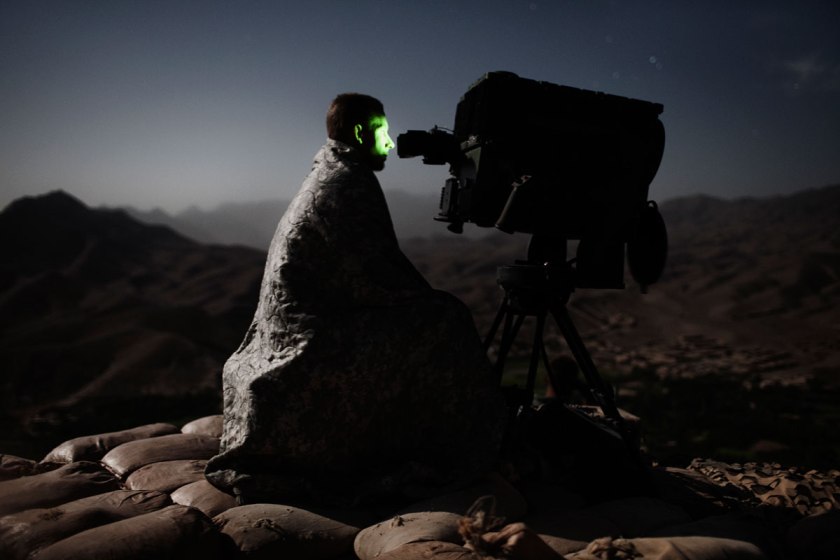




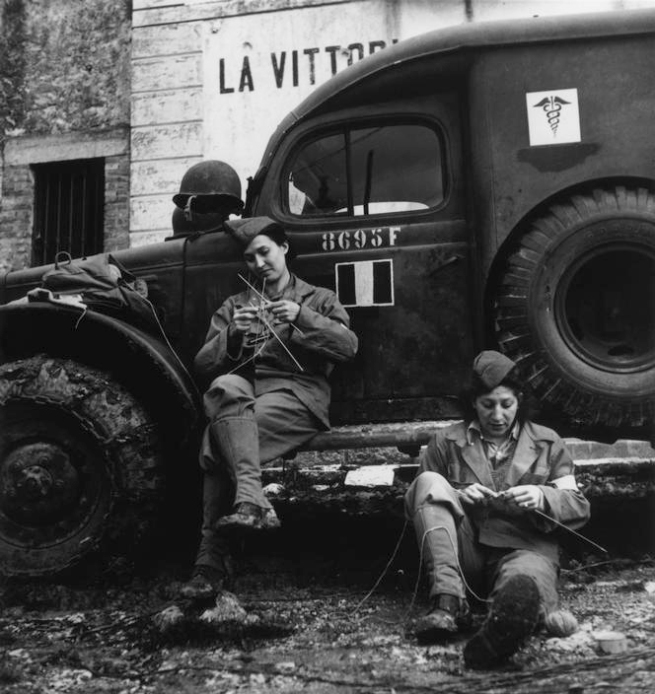


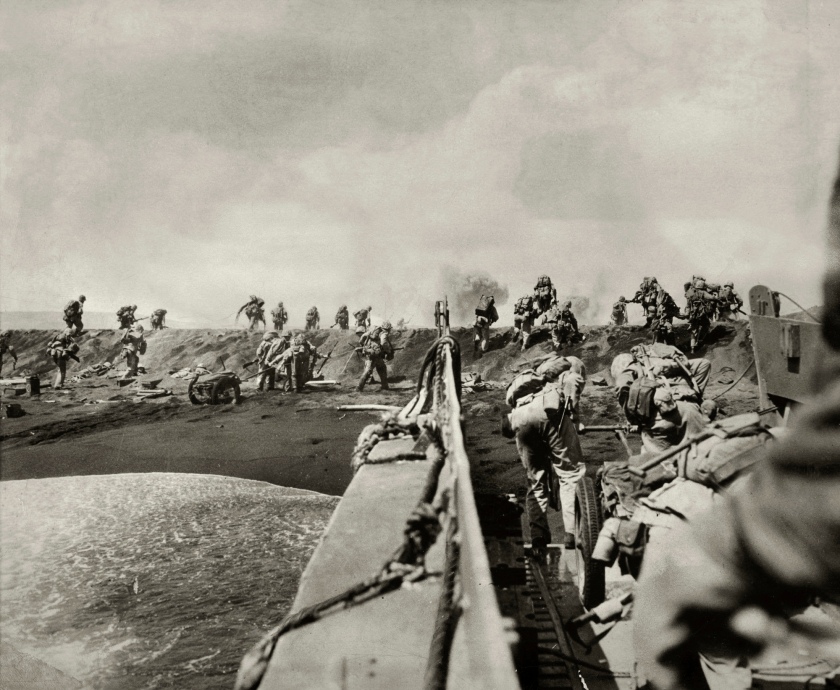
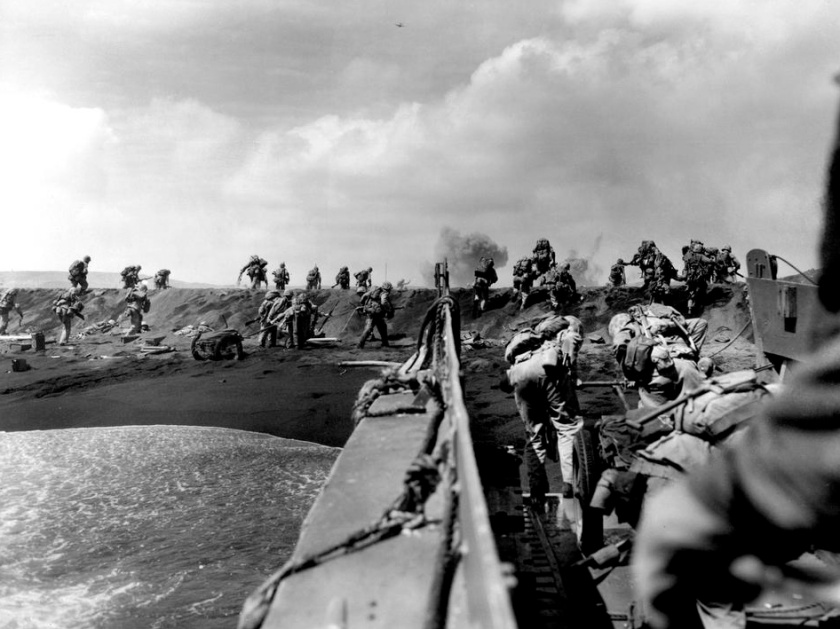


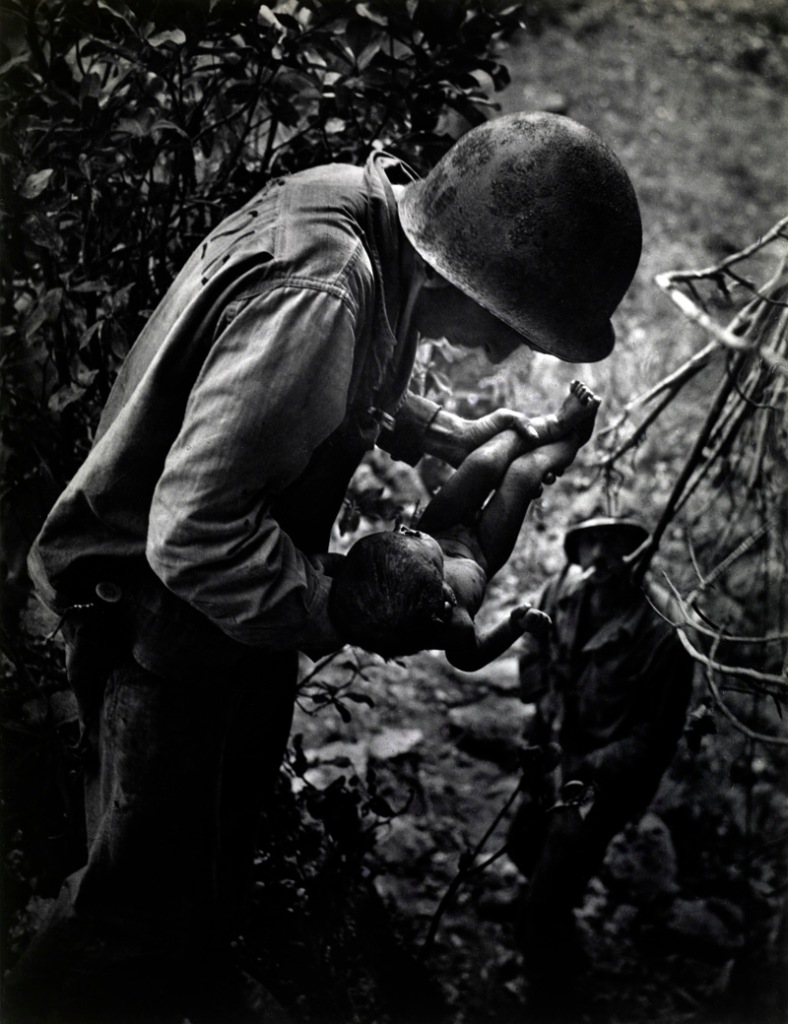

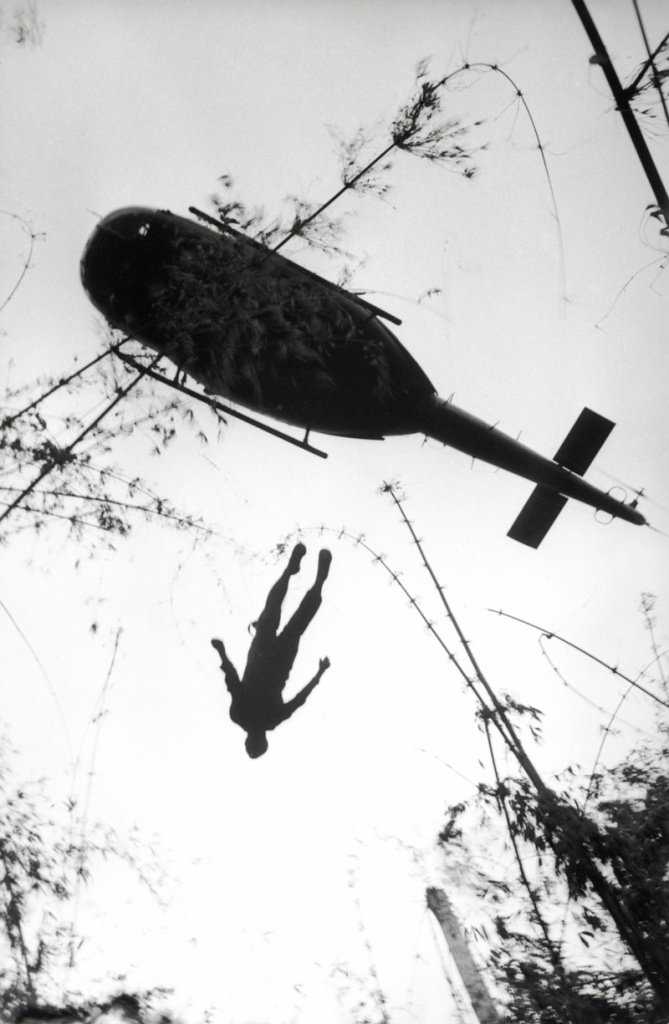
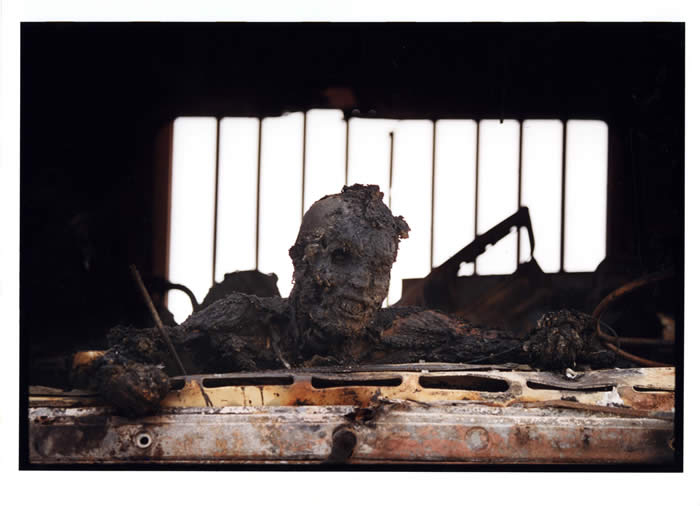

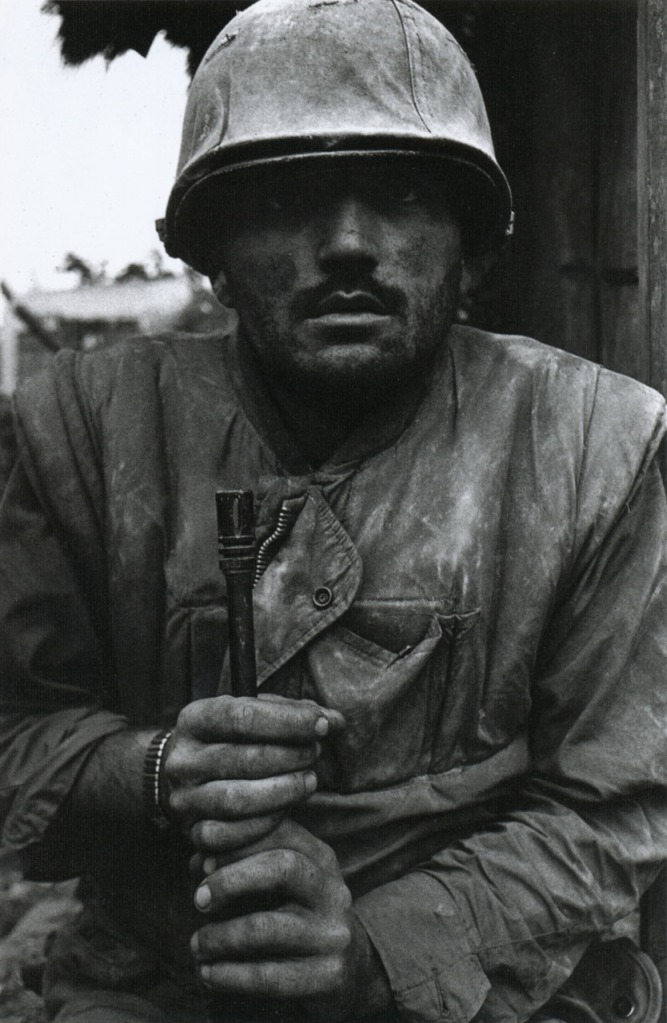
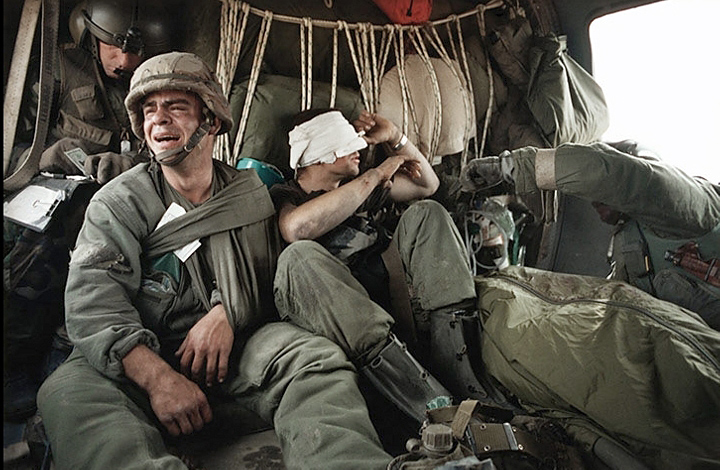

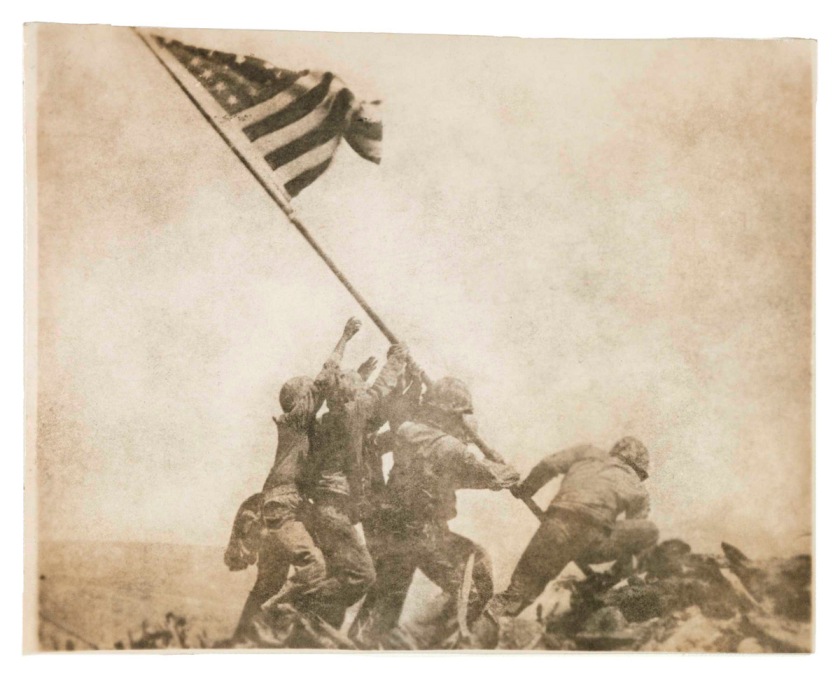
You must be logged in to post a comment.